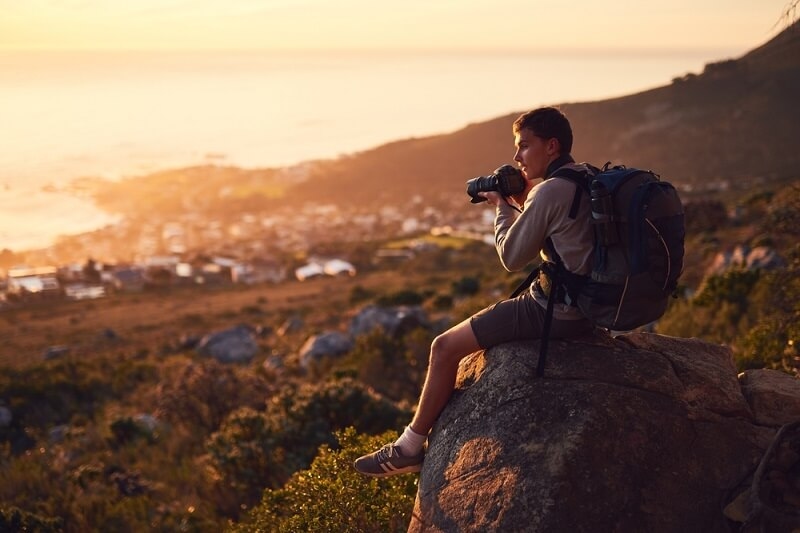
Vacations have a way of slowing you down. You start noticing details you usually miss—the way morning light spills over a mountain ridge or how the ocean fades into gold as the sun drops. That’s where vacation landscape photography comes in. It’s not just about snapping a pretty view; it’s about translating what you feel into a frame that tells your story.
Whether you travel with a professional setup or just a compact camera, you can create images that hold emotion and atmosphere. This guide brings together practical insight and creative techniques for shooting travel photography landscapes that feel alive, even after you’ve returned home.
Every destination has its rhythm. Some places hum with color, others move slowly under quiet skies. Learning to read that rhythm changes how you photograph. Vacation landscape photography lets you go beyond simple sightseeing. It helps you see light, patterns, and depth in every scene.
When you slow down to frame a landscape, you start connecting with the place instead of rushing through it. You notice the texture of the sand, the direction of the wind, the tones in the sky. You come home with more than pictures; you bring back moments that feel real.
This is why travel photography landscapes are so powerful. They remind you where you’ve been and what it felt like to stand there.
Capturing landscapes on a trip is part planning, part instinct. Before you pack, think about what kind of light and atmosphere you want. If your goal is golden sunsets or moody skies, research the sunrise and sunset hours at your destination.
Here’s what helps:
If you’re wondering how to shoot landscapes on holiday that don’t look like everyone else’s, the answer lies in patience. Wait for clouds to move, for wind to shape the water, or for a small human element to walk into your frame. The magic usually happens in the seconds between shots.
Explore More: How to Do Perfect Snowy Landscape Photography in Winter
Good travel photography is less about expensive gear and more about awareness. Keep your setup simple so you can focus on the scene. Here are some vacation photography tips that work wherever you go:
Above all, be flexible. Weather shifts, light fades, crowds appear. The best photographers adapt instead of fighting the moment. That’s part of what makes vacation landscape photography so fulfilling—it keeps you present.
Every trip can be turned into a creative project if you plan it with photography in mind. This short landscape photography travel guide can help you make the most of your time and surroundings.
Before you travel
During your trip
After you return
A good landscape photography travel guide doesn’t just teach you how to take photos; it shows you how to see. Every time you travel, your sense of composition and light evolves.
Also check: Cottagecore Photography: Capture Dreamy Nature Aesthetic
You don’t need complicated techniques to bring home memorable landscapes. Try a few easy landscape photography ideas for vacation that make use of what’s already around you.
If you find yourself unsure where to start, focus on what draws your eye first. That initial reaction is often the best story your photo can tell.

The most compelling travel photography landscapes are the ones that make people feel something. It could be stillness, awe, or nostalgia. Technical perfection helps, but emotion gives an image life.
To bring emotion into your landscapes:
Don’t chase perfection. A bit of imperfection or movement often makes an image believable. The goal of vacation landscape photography is not to copy postcards but to show the world through your perspective.
You may also like: Sunrise Rainbow Over Waterfall – Behind the Iconic Shot
Vacation landscape photography is about slowing down and noticing the world again. Every trip gives you a chance to see how light interacts with space, how stillness feels, and how fleeting moments can turn into art. You don’t need exotic locations or expensive equipment; you only need attention and patience.
Whether you’re learning how to shoot landscapes on holiday, refining your process through a landscape photography travel guide, or experimenting with easy landscape photography ideas for vacation, remember this: your images are more than visual memories. They’re proof that you paused long enough to see beauty where most people rush past it.
So pack your camera, watch the light, and give each place its moment. The best landscapes often happen when you least expect them.
This content was created by AI